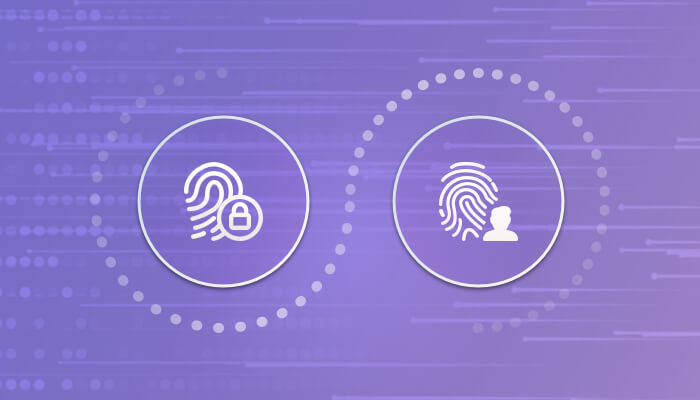9 Key Benefits of Identity & Access Management (IAM): Infographic
With the trend of digital adoption…
… Organizations should leverage identity and access management concept to provide proper access to the appropriate users or employees.
And, it is essential to understand the benefits of identity and access management thoroughly, to get the best out of this.
Here is a quick walkthrough on the key benefits of IAM, when implemented properly.
What is Identity and Access Management?
Identity and Access Management (IAM) is a domain of cyber security that helps an organization to set the roles, access control, rights, privileges, etc., to its employees.
Organizations can take the benefit of these IAM solutions to secure their corporate network and digital assets from cyber attacks.
Why Do We Need Identity and Access Management?
IAM appends an extra layer of security over your existing network infrastructure.
Security managers can easily define or manage the user roles and provide access to required applications.
Let’s go through the key benefits of IAM.
Click here to see the infographic.
#1. Enhances Account Security:
IAM helps organizations to prevent any form of data breaches, malware and phishing attacks, identity theft, and unlawful access to sensitive information.
Furthermore, IAMs also ensure to stay compliant (HIPAA, GDPR, etc.) and align to the business needs to remain risk-free from cyber threats.
The security team can always re-configure the IAM as per the ever-changing data regulatory conditions.
#2. Ease the Lives of Security Professionals:
Using IAM systems, security admins can implement various policies across all of the various branches, departments, and devices.
Mostly, modern IAMs are cloud-based (SaaS), which makes it easier to implement all the security measures through regular browsers and devices.
#3. Ease of Access:
All IAMs render the latest authentication techniques such as biometric authentication, passwordless authentication, hardware-based (FIDO2) authentication, smart authentication, etc.
It enables the employees and end-users to gain access to corporate systems through their most comfortable means, regardless of their time, place, or device.
#4. Improves Productivity:
All modern IAM solutions come with automation and AI-driven systems that understand security configurations and make authentication and identity management easy.
IAM systems help enhance productivity by automating multiple critical facets of managing authentication, identities, and authorization techniques.
Some IAMs leverage machine learning models that can seamlessly identify threats and activate risk-based authentication policies and steps.
#5. Centralize Access Control:
IAMs are centralized and hence, IAM implementation can strengthen the overall organization’s security, with transparency in the security policies, configurations, norms, and privileges.
Enabling centralized management of users’ identity & access can help the organization to efficiently scale the security potencies.
Also, due to a centralized and transparent system, IAM makes it easier to withdraw improper access privileges, identify violations, and revoke account access when needed.
#6. Minimizes Service Costs:
When businesses invest in IAM, they invest in the business itself.
IAM doesn’t need an on-premise infrastructure to operate, which saves the business from huge operational costs and additional maintenance costs.
Since IAM is highly secure, you can prevent the pitfalls resulting from fraudulent actions and non-compliance to the regulations.
IAM wipes out the risks and service costs through a well-built and protected system in place.
#7. Ease of Sharing Information:
IAM creates a facility to share information through a centralized platform.
This platform makes it easy to share the files with colleagues or customers in the most secure way.
It also adds to the goodwill of the organization, through trust and efficiency of information sharing.
#8. Saves Time on Administration:
When the users find it unable to get access to the required infrastructure, the administration process becomes difficult.
Manual provisioning pushes employees to spend countless hours for gaining access to the tools to perform their jobs.
However, IAM solution uses an automated access management system that saves time, making the process smooth, and efficient.
With IAM, organizations experience a flexible and manageable administration that offers various benefits like build privileged groups, streamline user registrations, and easily modify access settings etc.
#9. Improves User Satisfaction:
IAM eliminates the complexity of manual processes to a great extent.
It uses automation to let the users manage accounts and requests through self-service techniques like password resets.
The users can choose a unique password as they wish.
The same password can be used across multiple systems in the organization with the help of Single Sign-On (SSO) technique that minimizes the risk of remembering different passwords.
Once deployed effectively, IAM becomes intuitive and simple to the end user.
Here is an infographic that briefly explains about the benefits of IAM –

Conclusion:
We hope this blog has given you a brief overview about the benefits of identity and access management.
IAM solutions also increase organization security by automating different authentication and access control processes.
For choosing the appropriate identity and access management vendor, it is essential to understand all the benefits & capabilities IAMs can bring to your organization.
Secure your organization right now – Start 15 Days Free Trial

